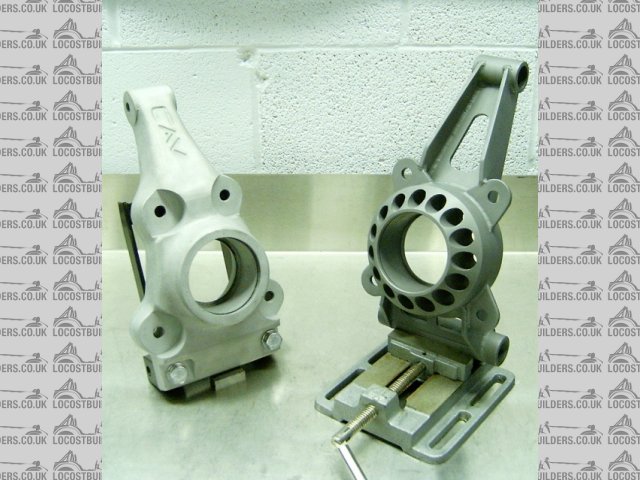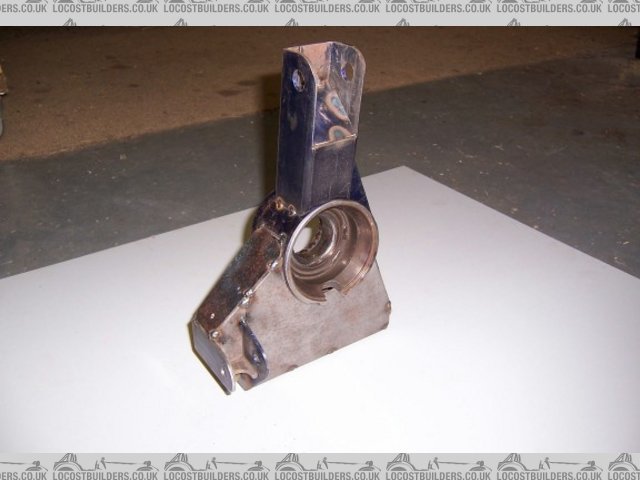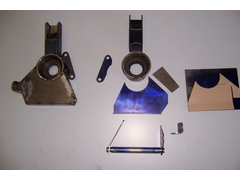Fred W B
|
| posted on 30/11/06 at 08:23 AM |

|
|
Bit more on ally verses steel uprights
Bit more on ally verses steel uprights
see thread here
Cheers
Fred WB
 
uprights
[Edited on 30/11/06 by Fred W B]
|
|
|
|
|
NS Dev
|
| posted on 30/11/06 at 08:43 AM |

|
|
that's a nice piece of work!
Retro RWD is the way forward...........automotive fabrication, car restoration, sheetmetal work, engine conversion
retro car restoration and tuning
|
|
|
3GEComponents
|
| posted on 30/11/06 at 09:03 AM |

|
|
That steel one looks fantastic.
|
|
|
Fred W B
|
| posted on 30/11/06 at 09:08 AM |

|
|
Yea, makes my effort look a bit sick
Cheers
Fred W B
 
upright tack
 
upright parts
[Edited on 30/11/06 by Fred W B]
|
|
|
3GEComponents
|
| posted on 30/11/06 at 10:07 AM |

|
|
Not too shabby though Fred, it just makes yours look over engineered.
I'm off down to the lathe now!
|
|
|
Uphill Racer
|
| posted on 30/11/06 at 10:04 PM |

|
|
Nice one Fred. The wider bottom mounting points are always better for distributing load, and it would be nice to find out the wieght of all 3
uprights.
|
|
|
JoelP
|
| posted on 30/11/06 at 10:10 PM |

|
|
On thing worth bearing in mind when considering the ally versus steel, is that the ally one on the left was designed many years ago to go onto the
cars that probably were headed for road use. Hence they wont be as close to the limit as the steel ones, which he has clearly made to be as extreme as
possible - when the steel one was made the whole aim was probably to be lighter than the ally originals. In fact the steel one looks a lot better
engineered. Hence not quite a fair comparison. I wonder how much he could shave off the weight of the ally one if he put his mind to it?
|
|
|
cymtriks
|
| posted on 1/12/06 at 11:46 PM |

|
|
WARNING!
The reason for those holes in the linked design is air cooling.
Use a high temperature grease or let conduction do the job, not air cooling.
Air cooling an outer race of a bearing can cause the bearing to pinch the balls or rollers leading to a much shorter life.
As the housing is a fairly beefy bit of steel (same expansion coefficient) and the holes are not that big they've probably got away with it.
|
|
|
Alan B
|
| posted on 2/12/06 at 12:12 AM |

|
|
quote:
Originally posted by cymtriks
The reason for those holes in the linked design is air cooling.
Use a high temperature grease or let conduction do the job, not air cooling.
Air cooling an outer race of a bearing can cause the bearing to pinch the balls or rollers leading to a much shorter life.
As the housing is a fairly beefy bit of steel (same expansion coefficient) and the holes are not that big they've probably got away with it.
Yep...thought that a bit odd myself too. The only time I've seen any form of cooling on anything with ball/roller bearings is on very high speed
spindles 10k plus rpm....wheel bearings should not get THAT hot IMO. I've designed a lot of high speed machinery with rolling element bearings
so I have some relevant experience.
Agreed, it looks cool...but do the holes serve any real purpose?...I await being convinced.
|
|
|
Mr Clive
|
| posted on 2/12/06 at 03:03 AM |

|
|
are the holes not there to allow for better cooling (not sure how much better mind) of the brake rotors?
|
|
|
Lippoman
|
| posted on 2/12/06 at 07:28 AM |

|
|
I thought the holes were an easy to manufacture way of creating a web to bind the hubcarrier to the upright.
A bit like this design but simpler to make...

|
|
|
MikeRJ
|
| posted on 2/12/06 at 05:28 PM |

|
|
quote:
Originally posted by Alan B
Agreed, it looks cool...but do the holes serve any real purpose?...I await being convinced.
Agreed. My first thought was that it was simply a way to get the stiffness required in the upright center/bearing housing (by having a thick section)
but without the weight penalty of a solid chunk of steel.
I suspect the cooling benefits stuff was just marketing talk.
|
|
|
Mr Clive
|
| posted on 2/12/06 at 10:12 PM |

|
|
Very true. Without the holes, that would be a pretty hefty chunk of solid steel.
|
|
|
3GEComponents
|
| posted on 3/12/06 at 09:56 AM |

|
|
It's probably another way of keeping the heat effected zone from welding away from the carefully machined bore for the bearings.
|
|
|
Fred W B
|
| posted on 6/3/07 at 06:13 AM |

|
|
Update on this upright + weight confirmation at 10 lbs, 4.5 kg
Here
Cheers
Fred W B
[Edited on 6/3/07 by Fred W B]
|
|
|
blueshift
|
| posted on 6/3/07 at 03:03 PM |

|
|
It looked like weight reduction to me rather than cooling, but cymtriks knows what he's talking about and I don't, generally speaking.
wouldn't you machine something like that after welding?
|
|
|













